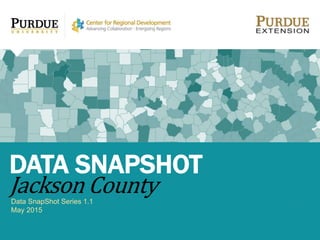The document provides demographic, economic, and labor market data for Jackson County, Indiana from various sources. It shows that from 2000-2013 the population grew 5% to over 43,000 people, driven by natural increase and international migration. The number of establishments increased 33% during this period, with most growth coming from new businesses. Manufacturing is the top industry, employing over 6,000, though transportation and warehousing jobs declined 33%. Educational attainment improved but still lags the state average.







































